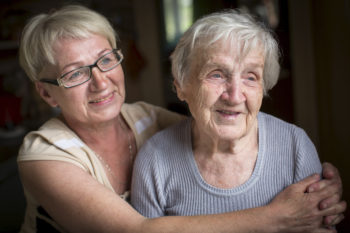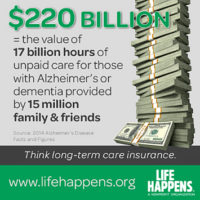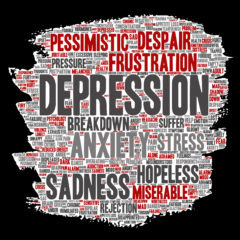
HOME CARE SERVICES are facing a crisis in America. “BABY BOOMERS” are aging into retirement, and with that is the increasing need and demand for (home care services) senior services and long-term care (LTC). Boomers thus far are the largest population to retire, and many remain completely unaware of the tsunami that lurks over the horizon. They face a unique challenge that past generations escaped. Who will be available to provide the care they may need and what impact will this have on their retirement plans?
Studies show that 74% of people would prefer to receive care at home. (Health Care and Long-term Care Study, presented by Nielsen for Nationwide, Nov. 2015)
However, the number of people available to work for agencies that provide home health care (HHC) is barely growing compared to the number of people that will need HHC services – estimated to be 120 million by 2024. (www.1800homecare.com: “Massive Caregiver Shortage Expected as Demand for Home Care Services Rises”, Christopher Adrien, March 20, 2017)
By 2024, it’s estimated there will be a critical lack of home health care workers. To make matters worse, turnover rates due to caregiver burnout are very high in the home care industry, exceeding 70%. Therefore, the Home Health Care industry is bracing itself for a shortage of labor to fill the much-needed caregiving positions. (www.1800homecare.com: “Massive Caregiver Shortage Expected as Demand for Home Care Services Rises”, Christopher Adrien, March 20, 2017)
This problem could bring a greater need for INFORMAL CAREGIVERS to step in and provide help in order to keep an individual from being forced into a facility simply because professional care services at home were not readily available. But the people charged with these tasks (family or friends) may not be able to financially afford to step away from a job or even reduce working hours.

EXPECT THE COST OF HOME CARE TO INCREASE WITH THE GREATER DEMAND AND SUPPLY SHORTAGE OF CAREGIVERS.

What is an Informal Caregiver?
Simply put, it is an UNPAID individual – usually a spouse or partner, family member, friend or neighbor – who assists an individual in need of help with ACTIVITIES of DAILY LIVING (ADLs) including Bathing, Dressing, Eating, Transferring, Toileting, or Continence. This care is usually given in a home setting. Some of these needs may be what are called INSTRUMENTAL ACTIVITIES of DAILY LIVING (IADLs) including doing light housework, preparing and cleaning up after meals, taking medication, shopping for groceries or clothes, using the telephone, managing money, taking care of pets, using communication devices, or getting around the community.
Informal Care Giving and Home Care – A Crisis Facing America
$522 Billion is the annual amount spent and opportunity cost losses due to informal care. (The Opportunity Costs of Informal Elder-Care in the United States; Health Services Research, June 2015) To put those numbers in perspective, there is a more overall cost for INFORMAL CARE than the total sales Walmart had in 2016 ($482 Billion).


Who Is Providing Home Care?
66% of older people receiving care at home get their care exclusively from family (mostly wives and daughters).
26% receive some combination of paid help and unpaid family care.
Only 9% receive all of their care from paid help.
(Family Caregiver Alliance, National Center on Caregiving, February 2015)


Taking Care of Someone Who Is Chronically Ill Can Make You Chronically Ill
There’s no doubt most spouses and children will step in to help, HOPEFULLY, FOR A VERY SHORT PERIOD OF TIME SHOULD THE NEED ARISE. Some spouses and children can be good caregivers others can’t. Good intentions have limits. Ideally, in a world, you can plan for with a long-term care insured solution. You simply don’t want to be a caregiver. Unfortunately, when money is not available to pay for a caregiver, unpaid spouses or children must assume the role AS AN INFORMAL CAREGIVER.
Some may believe their kids will take care of them. While it may seem like the solution, you need to consider what being a caregiver really means.
Do you want to know how difficult it is to be a caregiver? Imagine having a spouse or child required to lift you every time you need to be moved. This isn’t a trick question but think about this because they may also need to feed, dress, bath, and help you with toileting duties.
For the person receiving care, your life isn’t going to stop rather someone else’s life will end. The consequences can be awful to your family and can be prevented with PROPER PLANNING, and with an insured long-term care solution given proper consideration.
What always makes the difference MONEY and being able to hire a paid caregiver so you can oversee and not have to provide care, thus preventing you from having to do any heavy lifting.
TO PUT IT ANOTHER WAY, MONEY ALLOWS CHILDREN TO MAINTAIN THEIR RELATIONSHIP AS CHILDREN SUPERVISING CARE, NOT CHILDREN PROVIDING CARE!

The Thankless Job Of Caregiving…A Life Changing Event
I saw this on the internet in doing some research about the problems of being a caregiver.
I have been caring for my mom that lives with Alzheimer’s for 18 months. This began when her husband had to be hospitalized then rehab followed for several months. When this first occurred my siblings wanted to pay me for being with mom, but I said no, let’s wait to see what happens. Well here we are, I am still here, caring for both of them with over $20,000.00 in expenses out of pocket for mom alone, to say nothing of no payment for this task.
We have just started to work through the process of trying to determine what mom owes me, and what I should be paid. She planned well for her retirement, but it has gotten really ugly, in fact, my brother and sister requested an investigation by Adult Protection Services in our area, not just one, but two, one for my mom the other for her husband. I haven’t done anything to raise this sort of issue. I am in the process of obtaining letters from neighbors and medical care providers to document my excellent care for them. I don’t even know what the accusations are yet, but am still absolutely appalled by them taking this sort of action. All over money, and paying me what this service is worth, it is definitely a 24/7 job which they have done little to assist. Their concern is that the share and share alike clause will change because of payment to me for service. But share and share alike has more than less money they expect to receive after mom’s death, but also the responsibility when care is needed for her while she is alive.
COMMON FEELINGS SHARED BY INFORMAL CAREGIVERS
THROWN INTO A ROLE THEY WEREN’T PREPARED FOR
OR DIDN’T ANTICIPATE!

“It just made me realize that my own needs have to be put on the back burner.” Caregiver, Spouse / Partner
“The advice I could give is to have a plan in place!” Caregiver, Son
“Sometimes his erratic behaviors due to memory loss can be a source of stress and frustration” Caregiver, Adult Brother
“It’s hard to build and maintain a life outside of my sister and her needs.” Caregiver, Sister
“Plan in advance, we’re all going to get old, it should not come as a big surprise!” Caregiver, Spouse / Partner
“Our financial situation has been stressed but we are still able to pay our bills so far.” Caregiver, Spouse / Partner
“It led to my retirement in order to provide her care.” Caregiver, Spouse / Partner
“Be prepared financially for the unexpected, and make sure you have an emotional support system.” Caregiver, Mother
“Coordinate all family members and schedule tasks amongst everyone so that one person is not bearing the entire burden themselves.” Caregiver, Father-In-Law
Many CAREGIVERS experience negative feels including guilt and resentment,
which negatively affects their personal health and well-being, often becoming ill themselves.

PROBLEMS, PROBLEMS, PROBLEMS!
“Providing care doesn’t bring families together, it often tears them apart.”
CHILDREN when thrown into the role as caregiver typically have their own family, career obligations and life issues. Caregiving reduces the time they spend with their spouse / partner and their own children as well as time to care for themselves. So adding the role of caregiver to an already busy day can take a physical, financial and emotional toll. A child frequently must take time off work or quit a job altogether in order to care for a parent.
Family conflicts arise when one child assumes a greater share of caregiving duties, or this problem is thrown into their lap with no recourse other than developing bitterness regarding this predicament. One may also be forced into assuming the financial responsibility for mom or dad’s care when their siblings don’t share in the costs or have no money to share in the expenses.
More problems occur when children are geographically spread around the country and whose life is going to be disrupted, or the one with no family is farthest away and the more financially responsible one with a family is suddenly thrown into the role as caregiver.
Three Questions:

Would you have a hard time being a caregiver?
Would you have or develop negative feelings if you were suddenly dropped into the role of a caregiver?
How would you feel if you had to pay for the cost of care you hadn’t planned on or weren’t prepared for because there was no plan in place?

The Big Cost: Economic Impact on Caregivers,
Time Spent Caregiving, Health Impact of Caregivers
People may perceive informal care as being “free”, but in reality, there is a BIG COST connected to the sacrifices family or friends make to provide care.
ECONOMIC IMPACT TO CAREGIVERS:
The average caregiver is a married 49-year-old female who is employed. Caregiving reduces paid work hours for these women on average of 41% and results in other career sacrifices in the form of passed up promotions, taking a leave of absence, quitting their job entirely or retiring early. Individuals returning to work when caregiving ends often wind up in jobs with less pay and less in benefits than the job they previously held. In addition, caregivers generally have out-of-pocket expenses relating to their caregiving responsibilities. This adds up to a large economic sacrifice. (Family Caregiver Alliance, National Center on Caregiving, February 2015)
$7,000 – approximate average annual out-of-pocket expense for family caregivers. (AARP Study, “Family Caregiving and Out-of-Pocket Costs: 2016 Report”)
$12,000 – approximate average annual out-of-pocket expense for long-distance caregivers. (AARP Study, “Family Caregiving and Out-of-Pocket Costs: 2016 Report”)
$303,880 – caregiver’s average loss over a lifetime in lost wages and benefits. / Men – $283,716 Women – $324,044 (Family Caregiver Alliance, National Center on Caregiving, February 2015)
TIME SPENT CAREGIVING:
Caregivers often invest significant time in helping their loved one. This results in time away from their own family, friends and personal work responsibilities.
24 hours a week – the average amount of time spent in the role of caregiver.
4 years – the average amount of time, in total, an individual devotes to caregiving.
30 billion hours – the total number of hours spent in the U.S., per year, on informal caregiving.
22 billion hours are performed by people with full-time jobs.
(The Caregiving Landscape: Challenges and Opportunities for Employers, Nobel, Weiss, Sasser, Sherman, Pickering, March 2017)
HEALTH IMPACT OF CAREGIVERS:
It’s not unusual for caregivers to ignore their own health, often becoming sick themselves. Economic and time challenges coupled with the physical and emotional stress associated with caregiving can impact the health of the caregiver. Caregivers are 2x more to say their overall health is poor vs. the general population. (2015 AARP Research Report – Caregiving in the U.S.)
People who provide informal care are more susceptible to:
EXHAUSTION AND EMOTIONAL STRESS
ANGER AND ANXIETY
ESCALATED SUBSTANCE ABUSE
HIGHER MORTALITY RATES
40% of sole caregivers predecease the patient they are caring for.
(Careing.com, Ron Kauffman – “I’m Losing Myself Being a Caregiver”, October 16, 2016)
Please consult your tax advisor when paying an informal caregiver as there may be tax implications to such an arrangement.

Beyond Dollars: Caregivers Face Career Crisis
Resulting from Lack of Long Term Care Planning
Denial Factor Cited As Biggest Barrier To Lack Of Planning
(October 1, 2015, Genworth’s latest Beyond Dollars Study)
Providing care for loved ones has taken a toll on the careers of half of all caregivers surveyed in Genworth’s latest Beyond Dollars study, with 11 percent actually losing their jobs and another 10 percent having to change careers. That’s in addition to the other financial, physical and emotional impacts of caregiving examined in the study.
Among caregivers surveyed in the study, 51 percent felt that caregiving responsibilities negatively impacted their ability to perform their jobs. That’s not surprising considering these findings:
♦
77% reported missing some work during the past year, up 19% from when caregivers were surveyed by Genworth in 2010
♦
Caregivers missed an average of 7 hours of work per week
♦
19% missed 10 or more hours of work per week
As a result of their caregiving responsibilities:
♦
11% lost their jobs
♦
10% had to change careers and
♦
12% had to change positions
Absences, reduced hours and chronic tardiness also translated into a significant reduction in caregivers’ paychecks. Approximately one-third of caregivers provided 30 hours or more of care a week. And, on average, caregivers reported having lost one-third of their income.

It’s not easy to admit when there is an issue, especially when it comes to matters of declining health, and it’s hard discussing the topic of long-term care with the people you love. However, by having this important talk makes things easier in the long run for caregivers and care recipients.
It’s not just the risk of you needing care. It’s also the consequences to your spouse and children’s emotional, physical and financial well being by not planning ahead. The advantages of having a plan in place resolve many issues and problems that may lie ahead.

